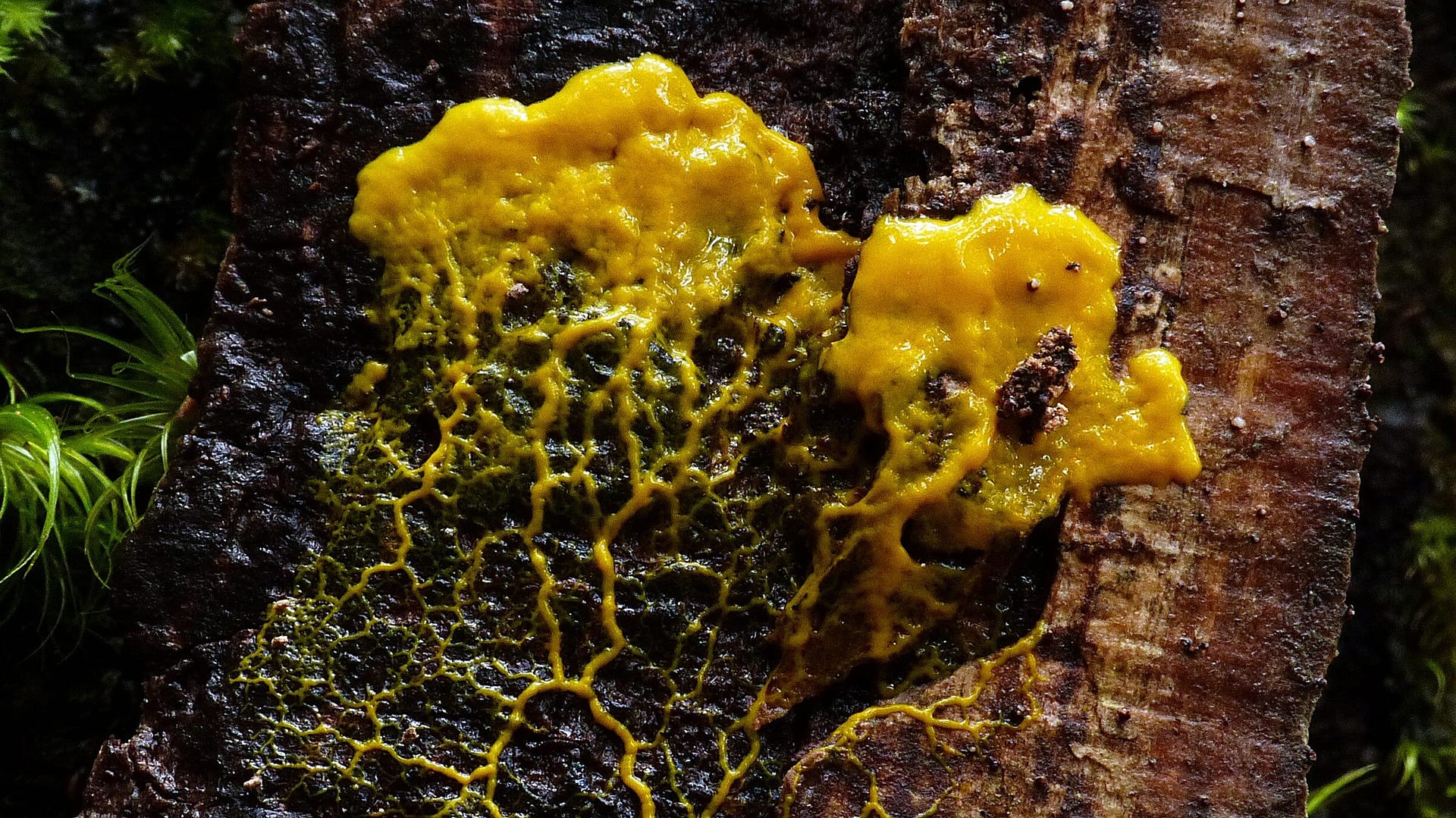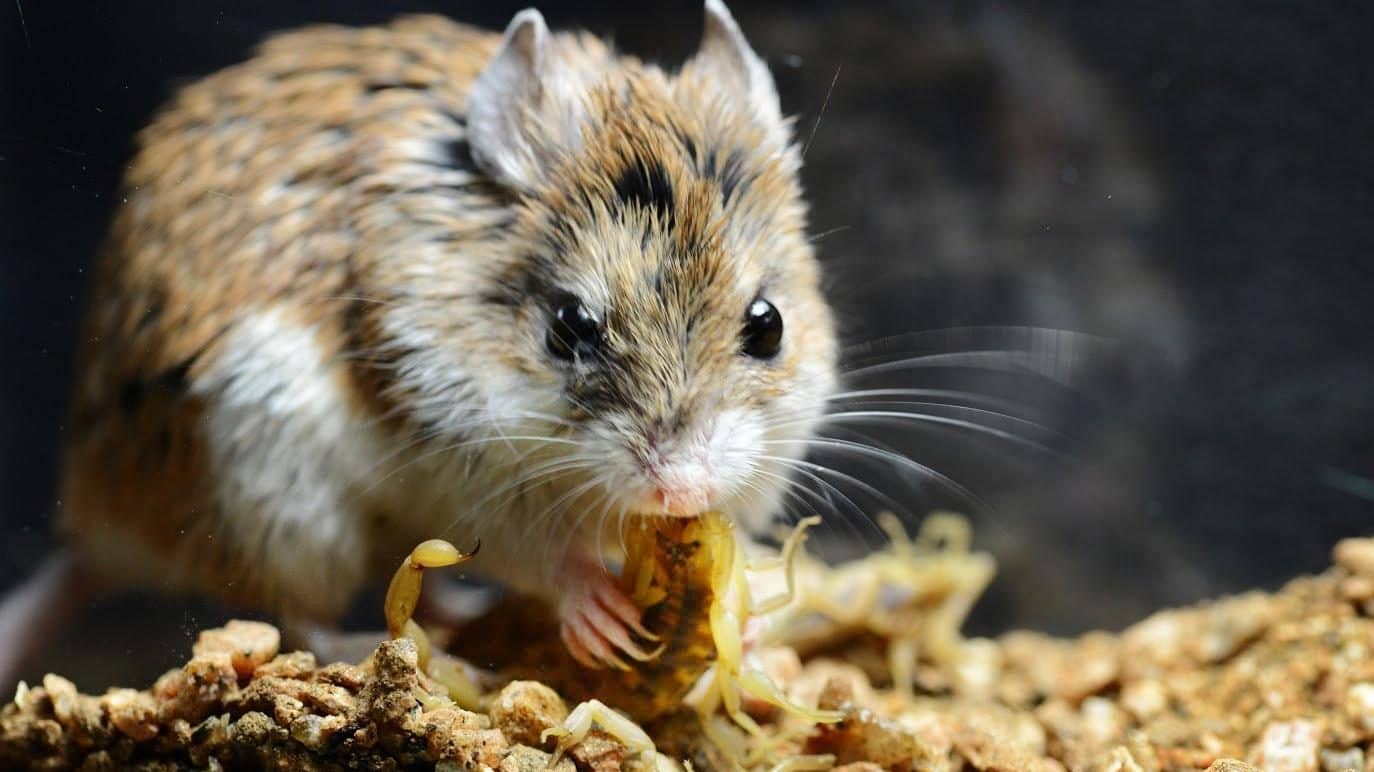Have you ever looked at another creature and wondered what they were thinking? What’s going on in your cat’s little brain? What’s the fish pondering down there in that pond? We barely understand the minds of other people, let alone other creatures’, but this biologist is looking to find the answers. And her first subject? Well, it’s a clever little weirdo called a slime mold. Strange thing is, it doesn’t even have a brain!
When Dr. Audrey Dussutour goes on vacation, she has some very curious companions. They’re pulsating, growing globs who will escape if not fed, but they are her key in learning more about how thoughts and decision making work!
It turns out “thinking” goes far beyond the squishy organ between our ears. There’s more than one way to be a genius—it just takes a small shift in perception to get there.

The squishy smarts of slime mold!
If I were to ask you where all of your thoughts and decisions came from, you’d probably say your brain, right? I’d guess most of us would—we humans are awfully proud of our big gourds.
But is a brain really necessary to make complex decisions? Slime molds put that to the test!
These creatures—over 900 varieties of them 1—aren’t animals or fungi. Instead, slime molds are just one giant cell! Even though they lack a brain, these single cells are able to solve complex problems: learning, remembering, and finding the most efficient way to their destination while saving the most energy.
These primitive goos can create efficient maps, split in two, fuse back together, share information, and travel large distances. 2 So, it’s not surprising that they’ve been fascinating Dr. Audrey Dussutour for years now!
Her absolute adoration for them oozes from her in this awesome video from SciFri! Prepare to be wowed by her research.
Wasn’t that just amazing?! For more from SciFri, check out their entire YouTube library! They always have a surprising wonder to share that helps to find more wonder everywhere.
To connect with Dr. Dussutour, head over to her website or follow her on Twitter!
Oh, and don’t miss seeing what these ants can do together:
Ant Butt Imposters? You’ll Never Look at Ants the Same Way Again!
While most would run away from a relentless raid of army ants, some critters have found clever ways to survive and thrive alongside them! The unusual tactics they employ—like pretending to be an ant butt—will give you a window of wonder onto the incredibly complex world we are a part of!
Read Article Watch Video Listen to PodcastMeet These Queens of the Bug World!
Powerful kingdoms are rising and falling all around us, each created and lead by a mighty queen. But what’s it like to be a queen in the insect world? We’re taking a royal tour through the lives of a wasp and a fire ant queen to learn what’s happening inside these busy colonies.
Read Article Watch Video Listen to PodcastRelationship Advice from… Ants?
How do we nurture our best relationships? Today’s teachers may be tiny, but they’ve been pulling off beautifully mutually beneficial relationships for millions of years! And yes, they’ve even befriended their own cows.
Read Article Watch Video Listen to PodcastHow you’re like a slime mold! (Yep, I said it.)
“Everyone is a genius. But if you judge a fish by its ability to climb a tree, it will live its whole life believing that it is stupid.”
Albert Einstein
One of my favorite parts about this video with Dr. Dussutour was that she had to redefine what success would look like for a slime mold in her experiments. At first, the slime’s performance was being compared to ants and the experiment kept failing. So, the researchers had to try something different: putting themselves in the place of the slime mold to hold them to their own standard.
Just like slime molds, we each have our own personalities. Some may like a certain food, while others hate it. Some may grow in a circle, while others create their own unique shapes.
Every one of us has our own special ways of accomplishing tasks; finding success however feels most natural to us. But when we’re held to the standards of others, we’ll most always feel like we’re falling short.
We must not define our genius by what others are capable of, nor define the genius of others by what we are capable of.
What would happen if we saw each other—even the slimes—as our own special kind of genius? If each of our unique talents were fully embraced, where could we all end up? Well, these articles might give us a clue:
A New “Twist” on Embracing Your Hidden Talents
Was there something that you just naturally did as a child that you stopped doing because of the critique or lack of support from others? What if that gift is just waiting to take you to your zone of genius! This unusually flexible guy shows us what’s possible!
Read Article Watch Video Listen to PodcastFinding Kids’ Hidden Talents! Are They Rascals or Geniuses?
Could kids’ (or even your) most annoying traits actually be a huge strength just waiting to be nurtured? Thought leader Josh Shipp takes us through how to support our kid’s unrefined skillset—and keep our own sanity, as well!
Read Article Watch Video Listen to PodcastDiscover the Man Who Sees Only with Sound! He’s Redefining What’s “Impossible”!
Daniel Kish has no eyes yet he can see the world around him using sound, much like a dolphin or bat, and he’s teaching us all to redefine what seems impossible.
Read Article Watch Video Listen to PodcastAs always, my friends, stay open to new possibilities!
- Sam

Don’t miss out on a single article!
Enjoy unlimited access to over 500 articles & podcast that give you a positive perspective on the state of the world and show you practical ways you can help.
Notes:
- PBS NewsHour. “Slime Molds: No Brains, No Feet, No Problem.” PBS NewsHour, 5 Apr. 2012, www.pbs.org/newshour/science/the-sublime-slime-mold. Accessed 12 Nov. 2020. ↩
- “Can Answers to Evolution Be Found in Slime? (Published 2011).” The New York Times, 2020, www.nytimes.com/2011/10/04/science/04slime.html. Accessed 12 Nov. 2020. ↩
- SciFri. “Breakthrough: The Slime Minder.” YouTube, 23 Oct. 2020, www.youtube.com/watch?v=dYQG6ac38UA&feature=emb_title. Accessed 12 Nov. 2020. ↩








